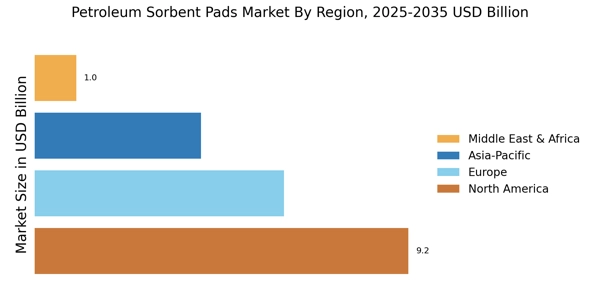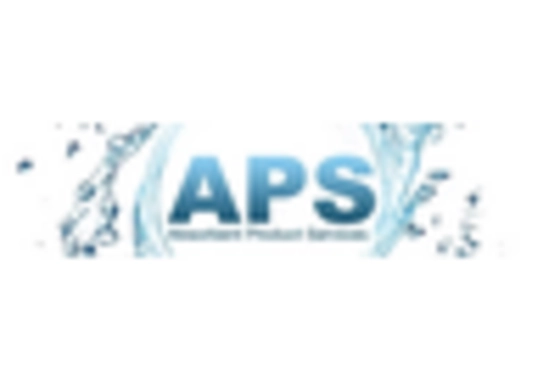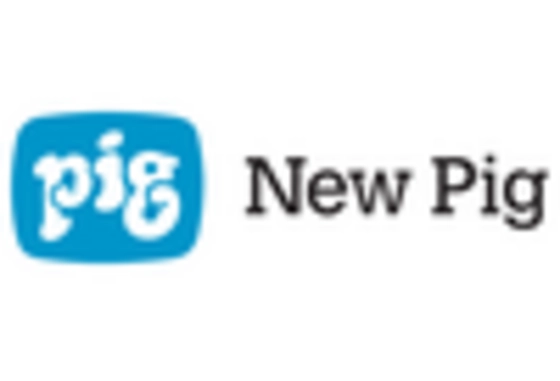Regulatory Frameworks
The establishment of stringent regulatory frameworks is a significant driver for the Petroleum Sorbent Pads Market. Governments and environmental agencies worldwide are implementing regulations that mandate the use of effective spill containment measures in various industries. Compliance with these regulations is essential for companies to avoid penalties and maintain operational licenses. As a result, the demand for petroleum sorbent pads is likely to increase, as they are recognized as a reliable solution for spill management. Industry expert's suggest that the regulatory landscape will continue to evolve, further propelling the growth of the petroleum sorbent pads segment, with an anticipated increase in market size by approximately 7% over the next few years.
Technological Innovations
Technological advancements play a crucial role in shaping the Petroleum Sorbent Pads Market. Innovations in material science have led to the development of more efficient and durable sorbent pads, enhancing their absorption capabilities. For instance, the introduction of advanced polymer materials has improved the performance of these pads, making them more effective in various applications. Market data indicates that the adoption of such innovative products is likely to increase, with a projected market growth of 6% in the next five years. As industries seek to optimize their spill response strategies, the demand for technologically advanced petroleum sorbent pads is expected to rise, driving overall market growth.
Rising Environmental Concerns
The increasing awareness regarding environmental protection is a pivotal driver for the Petroleum Sorbent Pads Market. As industries face mounting pressure to adopt sustainable practices, the demand for effective spill containment solutions has surged. Petroleum sorbent pads, known for their ability to absorb oil and petroleum-based fluids, are becoming essential in various sectors, including manufacturing and transportation. This heightened focus on environmental stewardship is reflected in market data, indicating a projected growth rate of approximately 5% annually in the petroleum sorbent pads segment. Companies are increasingly investing in these products to mitigate environmental risks, thereby enhancing their corporate responsibility profiles.
Expansion of Oil and Gas Sector
The ongoing expansion of the oil and gas sector significantly influences the Petroleum Sorbent Pads Market. As exploration and production activities intensify, the likelihood of spills and leaks increases, necessitating the use of sorbent pads for effective cleanup. Market analysis suggests that the oil and gas industry is expected to grow at a compound annual growth rate of around 4% over the next few years. This growth is likely to drive demand for petroleum sorbent pads, as companies seek reliable solutions to manage spills and comply with safety regulations. The integration of these pads into operational protocols is becoming a standard practice, further solidifying their market presence.
Growing Industrial Applications
The diversification of industrial applications is a key driver for the Petroleum Sorbent Pads Market. Industries such as automotive, manufacturing, and construction are increasingly utilizing sorbent pads for spill management and maintenance tasks. The versatility of petroleum sorbent pads makes them suitable for various environments, from workshops to large-scale industrial sites. Market trends indicate that the demand for these pads is expected to rise, with an estimated growth rate of 5% annually. As industries recognize the importance of maintaining safety and compliance, the adoption of petroleum sorbent pads is likely to expand, contributing to the overall growth of the market.


















Leave a Comment